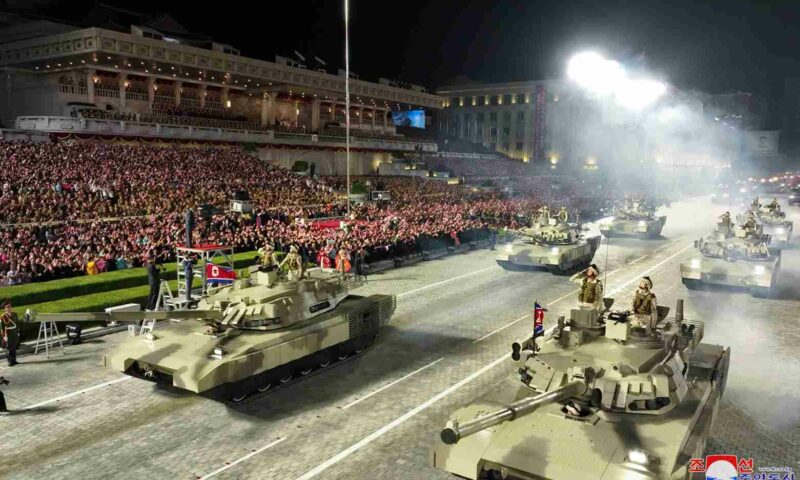By Spy Uganda Correspondent
North Korea held a huge military parade to commemorate the 70th anniversary of the armistice that ended the Korean War, said its state media, displaying the country’s latest intercontinental ballistic missiles (ICBMs) and drones as a display of its military strength.
Kim Jong-un, the leader of North Korea, took the reviewing stand to observe the military parade in Pyongyang late on Thursday to commemorate Victory Day while senior representatives from China and Russia were also present.
With their presence at the parade, the North appears to have wanted to express its solidarity with Beijing and Moscow, who supported Pyongyang throughout the Cold War fight, at a time when Seoul, Washington, and Tokyo are strengthening their three-way security cooperation.

The Korean War, which began with an invasion by North Korea in 1950, concluded with the armistice on July 27, 1953. However, the North declared the war over and designated the day of the armistice signing as Victory Day.
The recalcitrant regime has displayed new cutting-edge weapons during the parades to show off its military might. The latest parade, which was held amid higher tensions brought on by Pyongyang’s ongoing missile testing, was the second in around five months.

The North displayed new, cutting-edge long-range missiles, including the intercontinental ballistic missiles Hwasong-17 and Hwasong-18, at the parade. However, it did not introduce any new types of ICBM.
Later in the day, footage released by the North’s Korean Central Television also showed the “Haeil,” the North’s alleged first-ever autonomous underwater vehicle with nuclear weapons, as well as unmanned spy aircraft and strike drones.
“The strategic reconnaissance drones and multi-purpose attack drones that were newly developed and produced… made circular flights in the sky above the square for the military parade,” Yonhap reported.
As “the most powerful core mainstay means” of its strategic force to “fully and overwhelmingly” deter nuclear threats from its enemies, the North also referred to the solid-fuel Hwasong-18 ICBMs.






